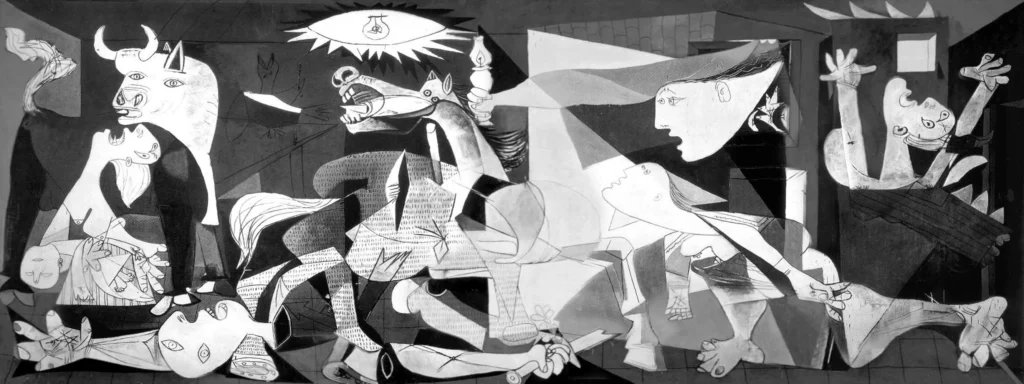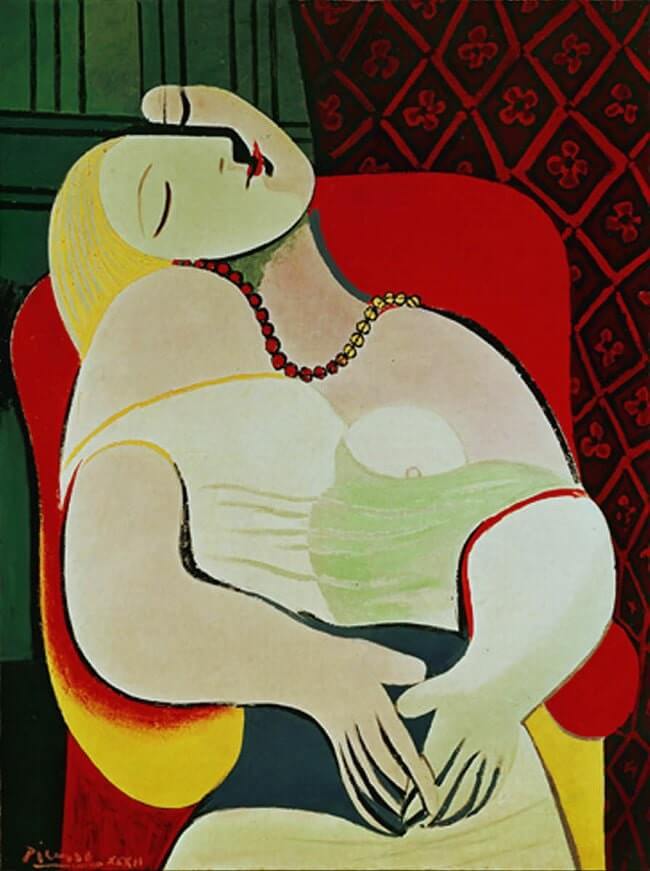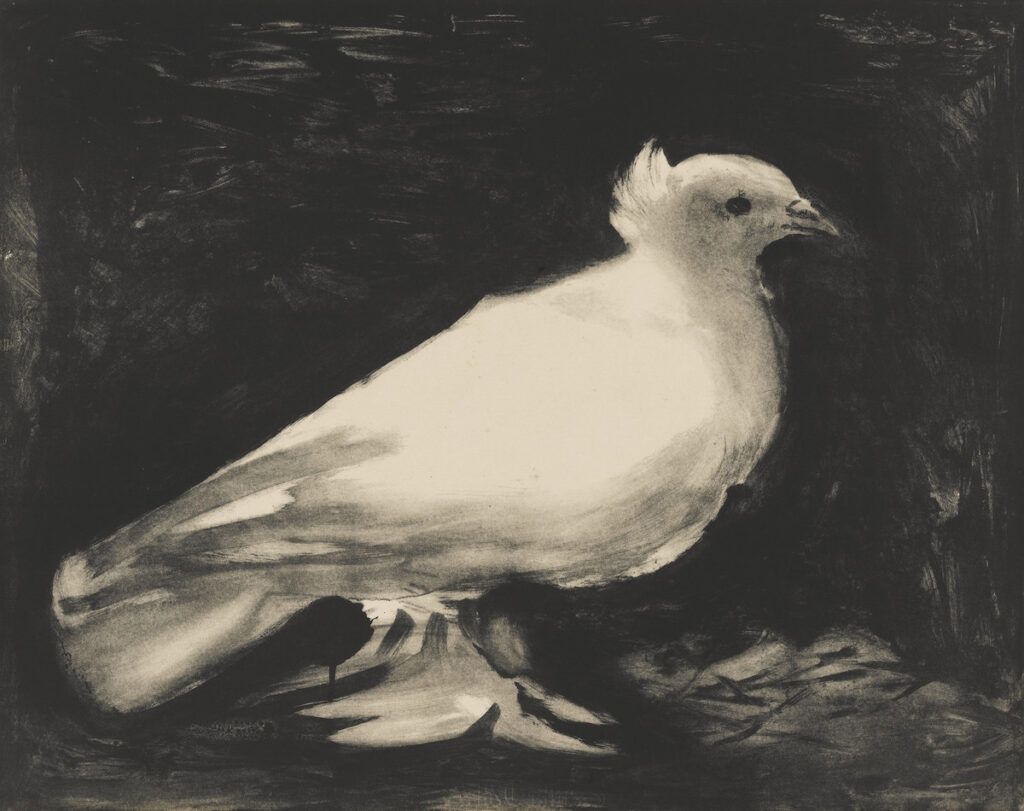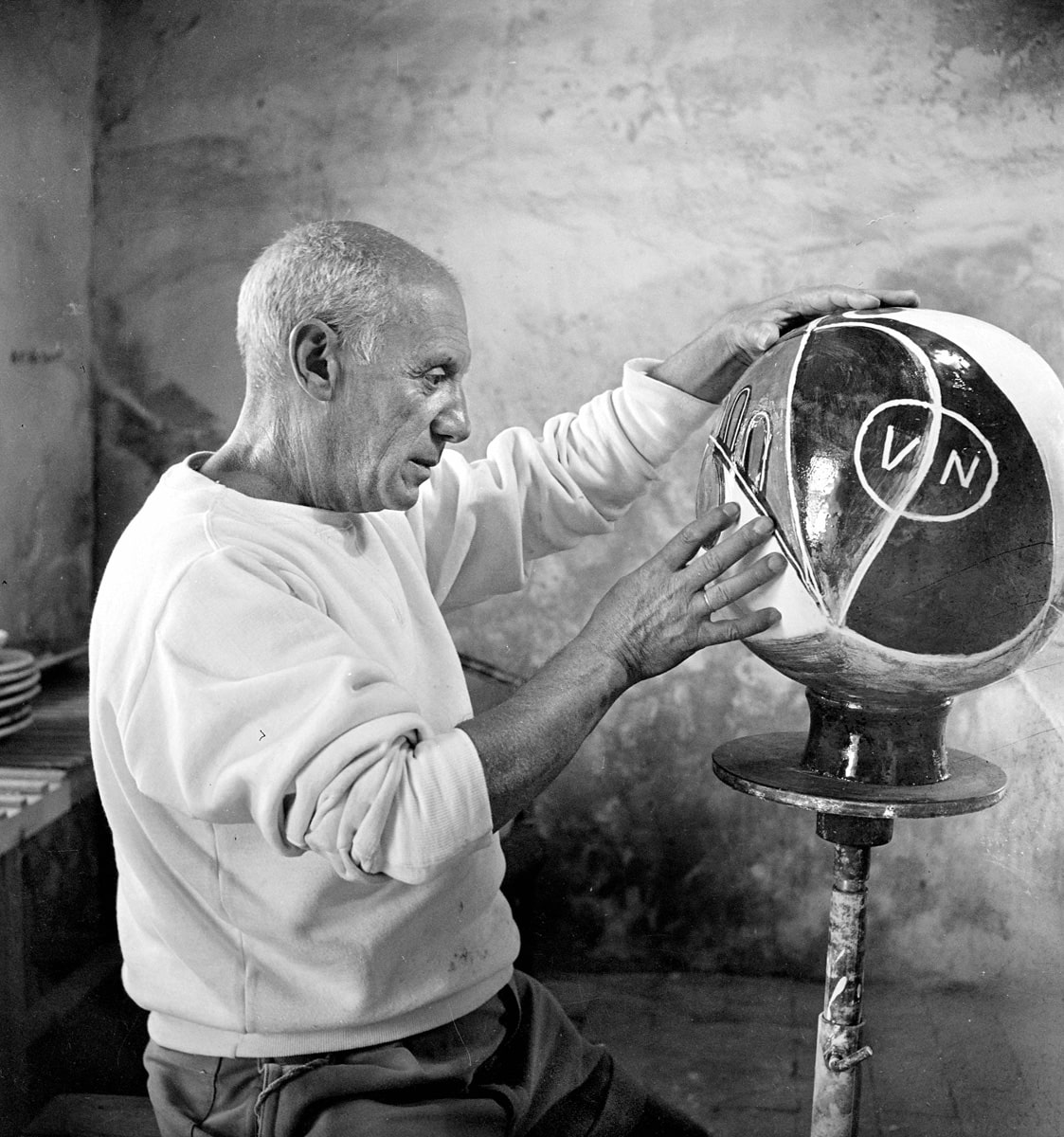In the kaleidoscope of art history, Pablo Picasso paintings stands as a luminary. Picasso was born in 1881 in Málaga, Spain. Picasso showcased his artistic prowess at an early age, receiving formal training at the Royal Academy of San Fernando in Madrid. However, it was his move to the bohemian quarters of Montmartre in Paris that ignited the spark of his revolutionary genius. Embracing a plethora of influences, from African and Iberian art to the works of Cézanne and Gauguin, Picasso’s early education laid the foundation for a style that defied convention and birthed the avant-garde movement.
Pablo Picasso’s Early Education and Cubist Revolution
In the heady atmosphere of the early 20th century, Picasso, alongside Georges Braque, pioneered the revolutionary Cubist movement, forever altering the landscape of artistic expression. This seismic shift marked the departure from traditional representation, fracturing forms into geometric shapes and challenging the viewer’s perception. Picasso’s ingenuity in co-founding Cubism transformed him into a revolutionary figure in the art world. His collaboration with Braque birthed a movement that dismantled artistic norms and introduced a new way of seeing.
The Master of Many Styles and the French Connection
Picasso’s artistic journey was a whirlwind of experimentation, traversing various styles and periods. From the melancholy hues of the Blue Period to the vibrant palette of the Rose Period, Picasso’s artistic evolution was a testament to his dynamic creativity. His collaboration with fellow artist and companion Fernande Olivier marked the inception of his exploration into Primitivism, as seen in “Les Demoiselles d’Avignon,” a groundbreaking piece that shattered preconceived notions of beauty.
FUN FACT: Picasso was not just a painter, but also a sculptor. He revolutionized the art of sculpture by introducing innovative techniques and materials, such as using everyday objects like bicycle handles and cardboard, and exploring new forms like cubist sculpture.
Pablo Picasso’s Role in Cubism and the 20th Century Art Scene
1. Guernica (1937)
Cubism, with its fractured forms and multifaceted perspectives, became the hallmark of Picasso’s genius. The artist’s fascination with breaking down and reassembling reality reached its zenith with “Les Demoiselles d’Avignon” and later matured into the analytical and synthetic phases of Cubism. His relentless pursuit of innovation and experimentation showcased not only his technical prowess but also his insatiable curiosity. Picasso’s influence extended far beyond the canvas, permeating the realms of literature, sculpture, and even costume design.

| Date of Completion | 1937 |
| Dimensions | 349 cm × 776 cm |
| Location | Museo Reina Sofia, Madrid |
Let’s kick off this Picasso party with the grand maestro’s political anthem, “Guernica.” Painted in the year 1937 as a response to the horrors of the Spanish Civil War, this colossal canvas stands as a testament to Picasso’s unwavering commitment to activism. Imagine the brush as a bullfighter’s cape, swirling through the air to expose the brutality of war. The dimensions alone could house a mini-fiesta, and the location? Madrid, the perfect stage for this artistic rebellion.
2. The Old Guitarist (1903)

| Date of Completion | 1903 |
| Dimensions | 122.9 cm × 82.6 cm |
| Location | Art Institute of Chicago |
Enter the blue-tinted ballad of “The Old Guitarist,” a melancholic serenade from Picasso’s Blue Period. This sad strummer, blinded by life’s struggles, plucks at our heartstrings. The Art Institute of Chicago hosts this musical masterpiece, where you can almost hear the notes of Picasso’s emotional resonance.
3. The Weeping Woman (1937)

| Date of Completion | 1937 |
| Dimensions | 60 cm × 49 cm |
| Location | Tate Modern, London |
Cue the tears and let’s waltz into the world of “The Weeping Woman.” In this emotional dance, Picasso captures the anguish of war with a palette that weeps alongside the titular character. Tate Modern in London hosts this sob-fest, where every brushstroke tells a story of pain and loss.
4. Le Rêve (1932)

| Date of Completion | 1932 |
| Dimensions | 130 cm × 97 cm |
| Location | Private Collection |
Shift gears into the dreamy tango of “Le Rêve.” Picasso’s lover, Marie-Thérèse Walter, takes center stage in this romantic escapade. With soft curves and vibrant hues, this painting is a love letter translated onto canvas, currently tucked away in a lucky private collection.
5. Dove (1949)

| Date of Completion | 1949 |
| Dimensions | 91 cm × 61 cm |
| Location | Private Collection |
Time for a break from the emotional rollercoaster – say hello to the peace-loving “Dove.” Picasso simplifies the message, turning the canvas into a gentle reminder that war is so last season. This feathered messenger resides in a cozy corner of a private collection, spreading tranquility wherever it goes.
6. Girl before a Mirror (1932)

| Date of Completion | 1932 |
| Dimensions | 162 cm × 130 cm |
| Location | Museum of Modern Art, New York |
Now, let’s cha-cha with “Girl before a Mirror.” Picasso’s visual play on self-reflection and time makes us ponder our own dance with identity. The Museum of Modern Art in New York hosts this reflective rendezvous, where mirrors become portals into the soul.
7. The Kiss (1969)

| Date of Completion | 1969 |
| Dimensions | 97 cm × 130 cm |
| Location | Picasso Museum, Paris |
Cue the romantic symphony with “The Kiss.” Picasso turns up the passion with bold colors and shapes that make us want to send heart emojis to a canvas. The Picasso Museum in Paris plays host to this lovey-dovey masterpiece, where every stroke is a smooch.
8. Don Quixote (1955)

| Date of Completion | 1955 |
| Dimensions | 195.6 cm × 131.1 cm |
| Location | Private Collection |
Enter the quixotic jig with “Don Quixote.” Inspired by Cervantes’ tale, Picasso tilts at windmills and defies artistic norms. This bold dance partner is currently held in a private collection, reminding us that art can be as rebellious as a knight on a quest.
9. Bull’s Head (1942)

| Date of Completion | 1942 |
| Dimensions | 40 cm × 29 cm |
| Location | Musée Picasso, Paris |
Who knew a bicycle could samba into the art scene? “Bull’s Head” turns everyday objects into a playful sculpture, proving that Picasso’s imagination knows no bounds. Musée Picasso in Paris is the lucky venue hosting this quirky tango between art and life.
10. Two Girls Reading (1934)

| Date of Completion | 1934 |
| Dimensions | 149 cm × 204 cm |
| Location | Private Collection |
Take a leisurely stroll with “Two Girls Reading.” Picasso captures a moment of quiet joy, turning the canvas into a cozy book nook. In the embrace of a private collection, this painting whispers the charm of simplicity and the joy of shared stories.
11. Portrait of Dora Maar (1937)

| Date of Completion | 1937 |
| Dimensions | 92 cm × 65 cm |
| Location | Musée Picasso, Paris |
Picasso’s muse, Dora Maar, takes center stage in this glamorous soirée. With a look that says, “I’m complex, and I love it,” this painting captures the enigmatic essence of relationships. Parisian Musée Picasso is the perfect venue for this stylish tango between artist and muse.
12. Woman with Flower (1932)

| Date of Completion | 1932 |
| Dimensions | 100 cm × 81 cm |
| Location | Tate Modern, London |
Closing the curtain on our Picasso party is “Woman with Flower.” Picasso challenges beauty norms with bold strokes and vibrant hues. Tate Modern in London is the stage for this final fiesta, where tradition is tossed aside, and beauty blooms in unexpected ways.
Artwork Spotlight: 1961 – Historical poster of the exhibition ‘Sala Gaspar, Drawings

Picasso’s “1961 – Historical poster of the exhibition ‘Sala Gaspar, Drawings” reveals the artist’s ability to create exciting lines and dynamic pictures that dare viewers to let their imagination and reality cross over with spectacular energy. This timeless print is a proof of the great power which Picasso posses to fascinate people of any age.
Frequently Asked Questions
What is Pablo Picasso’s most famous piece?
In addition to being Picasso’s most well-known work, Guernica is among the most well-known and powerful antiwar declarations ever made. The horrific 1937 bombing of Guernica, a Basque city, during the Spanish Civil War served as its inspiration.
Why Pablo Picasso paintings are expensive?
Dada, constructivism, futurism, and suprematism were all influenced by Picasso’s work. These days, his works of art are in high demand and demand prices in sale as comparable to those of the most well-known pieces in the world. Picasso’s well-known paintings are essentially synonymous with modern art just by virtue of his well-known name.
Conclusion
As the confetti of creativity settles, we bid adieu to Picasso’s playful parade of paintings. With a brush in hand and a twirl in our step, we toast to the artist who turned canvases into celebrations of emotion, rebellion, and a whole lot of fun! Adiós, Picasso party people!













